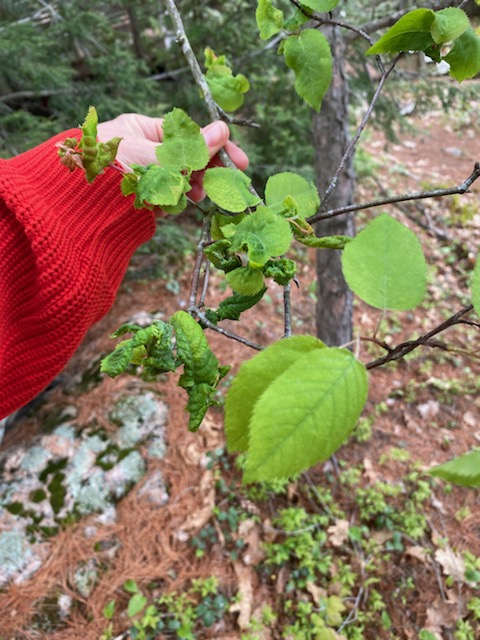
We have a small serviceberry tree that over the last 4 years has an issue that is gradually killing the small tree. The leaves, when they come out shrivel. I am not sure if there is an insect inside the leaves but if you pull the shrivelled leaves apart, there appears to be a reminant of an insect.
What should I do? Can the tree be saved – it has impacted 50 percent of the tree? Your advice would be appreciated. Thanks
Thank you for your question. We get lots of inquiries about Serviceberry Trees.
There are several things that could be going on.
It is possible that your serviceberry has been attacked by a disease or pest. According to the fact sheet Common Diseases and Treatments from LEAF(Local Enhancement & Appreciation of Forests), the curling leaves could be a sign that your serviceberry is suffering from blight disease- “A fungal or bacterial disease affecting flowers, leaves, and shoots causing young growth to turn black or brown and curl up.” For control of this disease LEAF suggests ” In summer, remove limbs, cutting well outside infected area (6-12) and dispose”
According to the Montana State University, there are numerous types of Serviceberry trees and some such as the Downy Serviceberry are more susceptible to pests and diseases such as Leaf spot, fire blight, borers, pear leaf blister and pear slug sawfly.
Less common pests that affect serviceberry are aphids and spider mites.
A strong spray of water from a hose will knock many of the aphids off the plant, and they won’t be able to return. It also rinses off some of the honeydew. Spray the plant every day until the plant is aphid free.
Read more at Clemson Cooperative Extension : Integrated Pest Management for Aphids
One caveat about this reference is treatment section at the end. Ontario has specific restrictions for pesticide use and you can find more information here Pesticide use in Ontario.
Good cultural practices are important. While the serviceberry can adapt to living in alkaline or neutral soils, it much prefers to be planted in acidic soils. These trees do not thrive in clay soils. To improve the drainage and composition of your clay spoil, it is best to use organic material. Compost is excellent but you can use other organic matter such as wood mulch, composted manure, shredded leaves, cover crops and composted pine bark.
You might consider consulting an arborist to provide further advice on how to try to save the tree. Landscape Ontario https://landscapeontario.com/search provides lists of information about professionals available in your area.
Good Luck with your serviceberry
June 4, 2022

